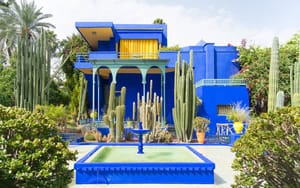Today, as we set up my Haftseen table, we are reminded of how deeply Nowruz is rooted in Persian culture and how beautifully it has stood the test of time. In this post, we would like to share a bit about the history of Nowruz, the meaning behind the Haftseen, and how this ancient tradition is still celebrated widely today.
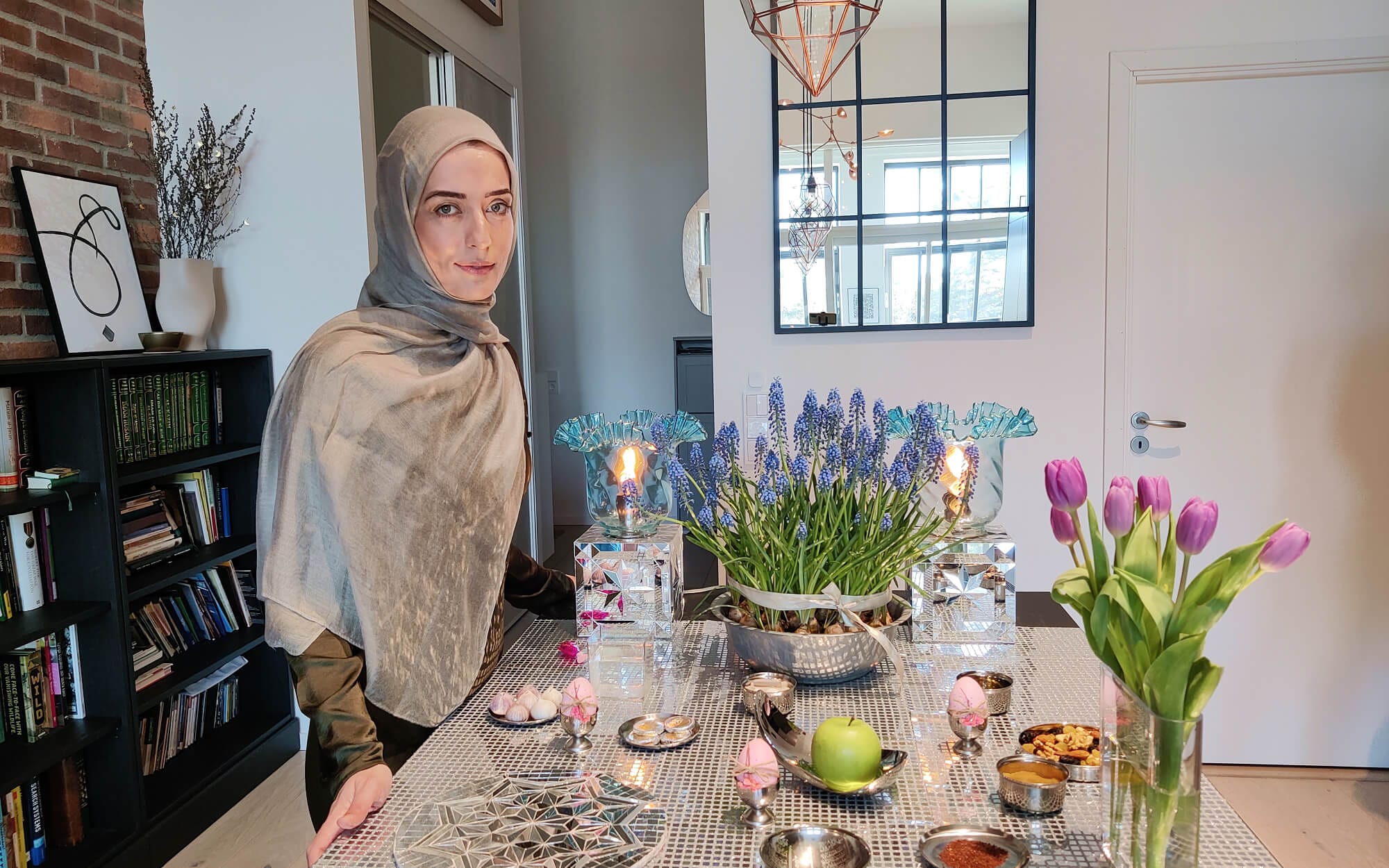
The ancient roots of Nowruz
Nowruz, meaning "new day" in Persian, is one of the world’s oldest celebrations, dating back over 3,000 years to the time of the Achaemenid Empire and even earlier, connected to Zoroastrianism – the ancient religion of Persia. It celebrates the vernal equinox, when day and night are equal, marking the first day of spring and symbolising rebirth, balance, and hope.
Although Nowruz predates Islam by many centuries, it has continued to flourish and is still very much alive in the modern-day Iranian calendar. In fact, Nowruz remains the biggest and most widely celebrated holiday in Iran, observed as an official public holiday for several consecutive days.
The meaning behind the Haftseen
At the heart of Nowruz is the Haftseen table, a beautiful arrangement of seven symbolic items, all starting with the Persian letter "س" (seen). Each item represents an element of life that we hope to invite into the new year:
- Sabzeh (سبزه) – Sprouted wheat, lentils, or barley symbolising rebirth and renewal.
- Samanu (سمنو) – A sweet pudding made from wheat germ, symbolising strength and abundance.
- Senjed (سنجد) – The dried fruit of the oleaster tree, symbolising love and compassion.
- Seer (سیر) – Garlic, representing health and protection.
- Seeb (سیب) – Apple, a symbol of beauty and good health.
- Somāq (سماق) – Sumac berries, representing the patience and wisdom that come with sunrise.
- Serkeh (سرکه) – Vinegar, symbolising the acceptance of life’s challenges and aging gracefully.
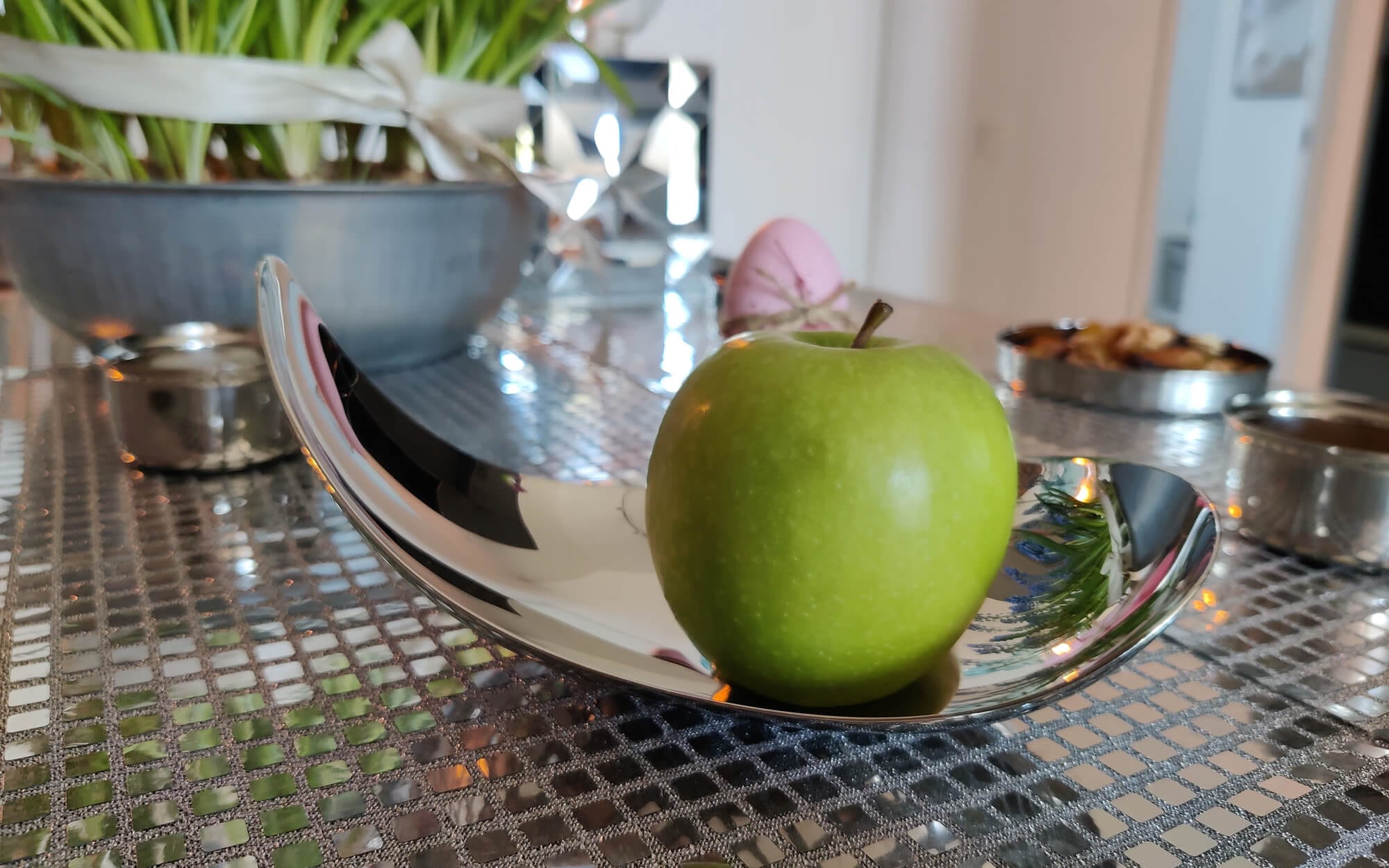
Many families also add additional items to personalise their Haftseen, such as candles for light, a mirror for self-reflection, goldfish for life, and painted eggs for fertility.
However, it is important to consider animal welfare when setting up your table. Traditionally, goldfish have been placed in small bowls as part of the display, but keeping goldfish in confined spaces can cause harm and stress to the animal. Personally, I choose to either skip this element or use a symbolic item, such as a small plastic fish, to represent life and movement. It’s essential to honour the spirit of Nowruz while also being mindful of the well-being of living creatures.
Haftseen inspirationby Deenista using mirrorwork
At Deenista, we've created a Haftseen table that honors Persian tradition with a modern twist. The design includes two beautiful table lamps with laleh (tulip) motifs and mirrorwork, adding both light and style to the setup.
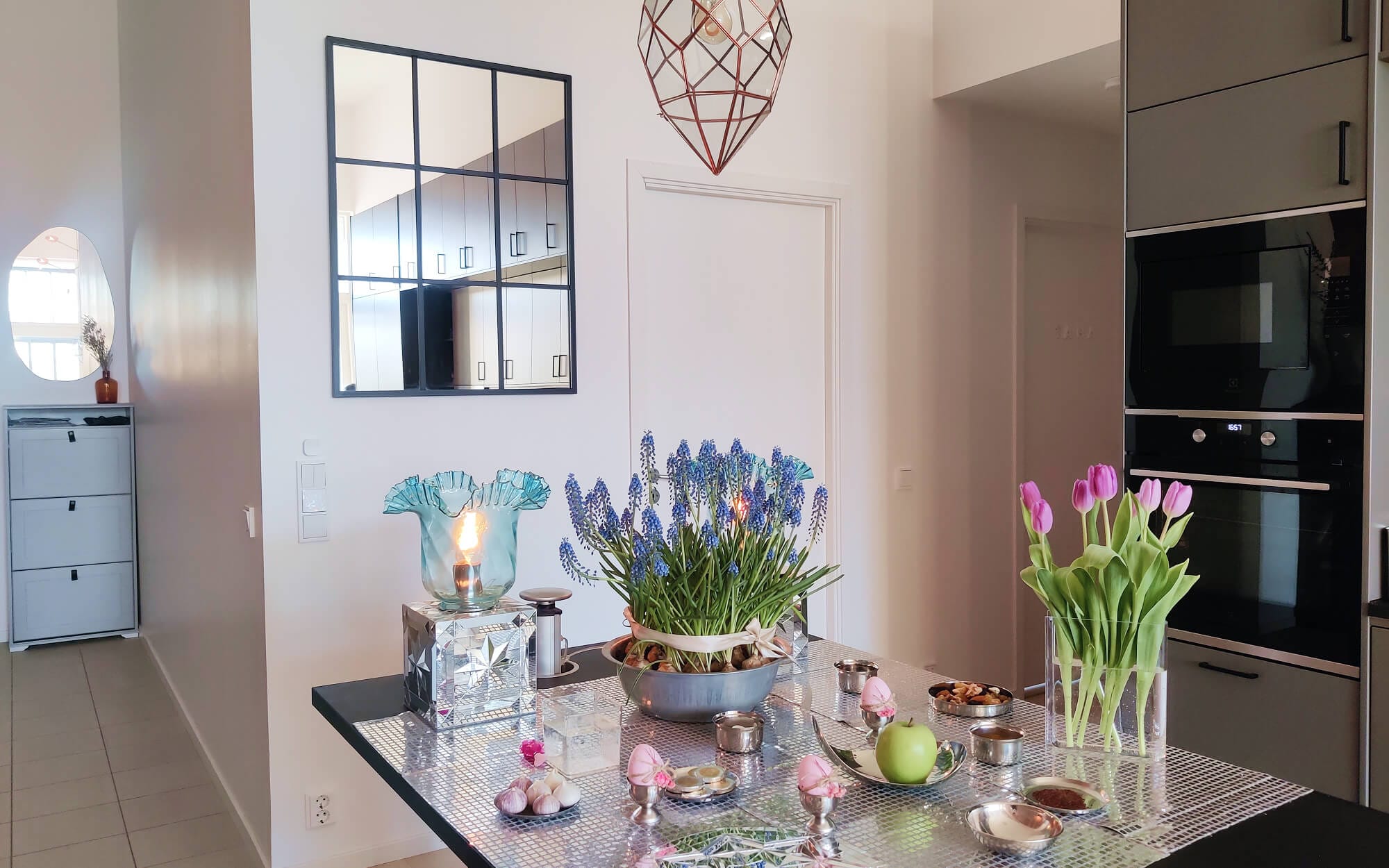
We’ve also included a handmade ayneh (mirror), crafted by a skilled artisan, which symbolizes self-reflection and new beginnings. The table is surrounded by pearl hyacinth flowers, adding a fresh touch of renewal to the celebration.
To complete the look, we've selected stainless steel bowls and plates that perfectly match the traditional theme, with a modern, sleek finish. Our Haftseen table blends Persian culture with thoughtful design, bringing beauty and meaning to your celebration.
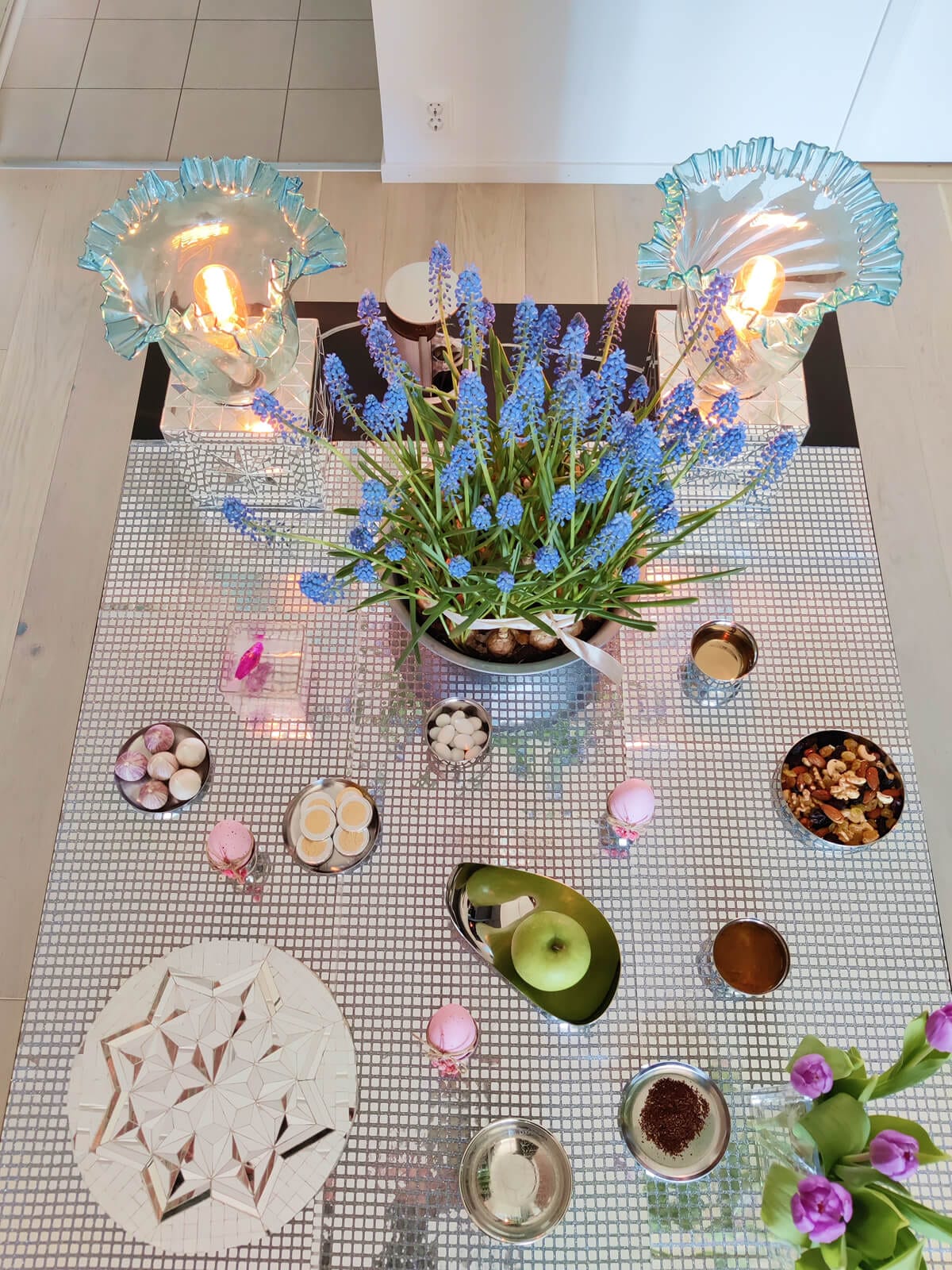
Tulips are often associated with love, passion, and beauty. In Persian culture, they symbolize the arrival of spring, renewal, and a fresh start, perfectly aligning with the themes of Nowruz. The vibrant colors of tulips also represent the joy and hope the new year brings. Fun fact: tulips were once so prized in the 1600s that they sparked a trading frenzy in the Netherlands, known as "tulip mania"!
Nowruz: a celebration beyond borders
While Nowruz is a cornerstone of Iranian culture, it is not exclusive to Iran. The tradition has been kept alive and is celebrated by millions across a wide region. Some of the countries where Nowruz is officially or widely celebrated include:
- Afghanistan
- Tajikistan
- Uzbekistan
- Kurdish regions of Iraq and Turkey
- Azerbaijan
- Parts of Central Asia and the Caucasus
In each place, Nowruz takes on local flavours and customs, but the heart of the celebration – the welcoming of spring and new beginnings; remains the same.
Nowruz and Islam: a cultural tradition that endures
It is important to mention that Nowruz is a cultural and seasonal festival rather than an Islamic one. While it originates from the pre-Islamic era and is tied to Zoroastrian beliefs about light, nature, and cosmic balance, it has remained a cherished tradition even in predominantly Muslim societies.
In Iran, Nowruz was embraced as part of the cultural identity, regardless of religion. For many, it is about gathering with family, cleaning the home (Khaneh Tekani), visiting loved ones, and starting fresh; values that transcend faiths and borders.
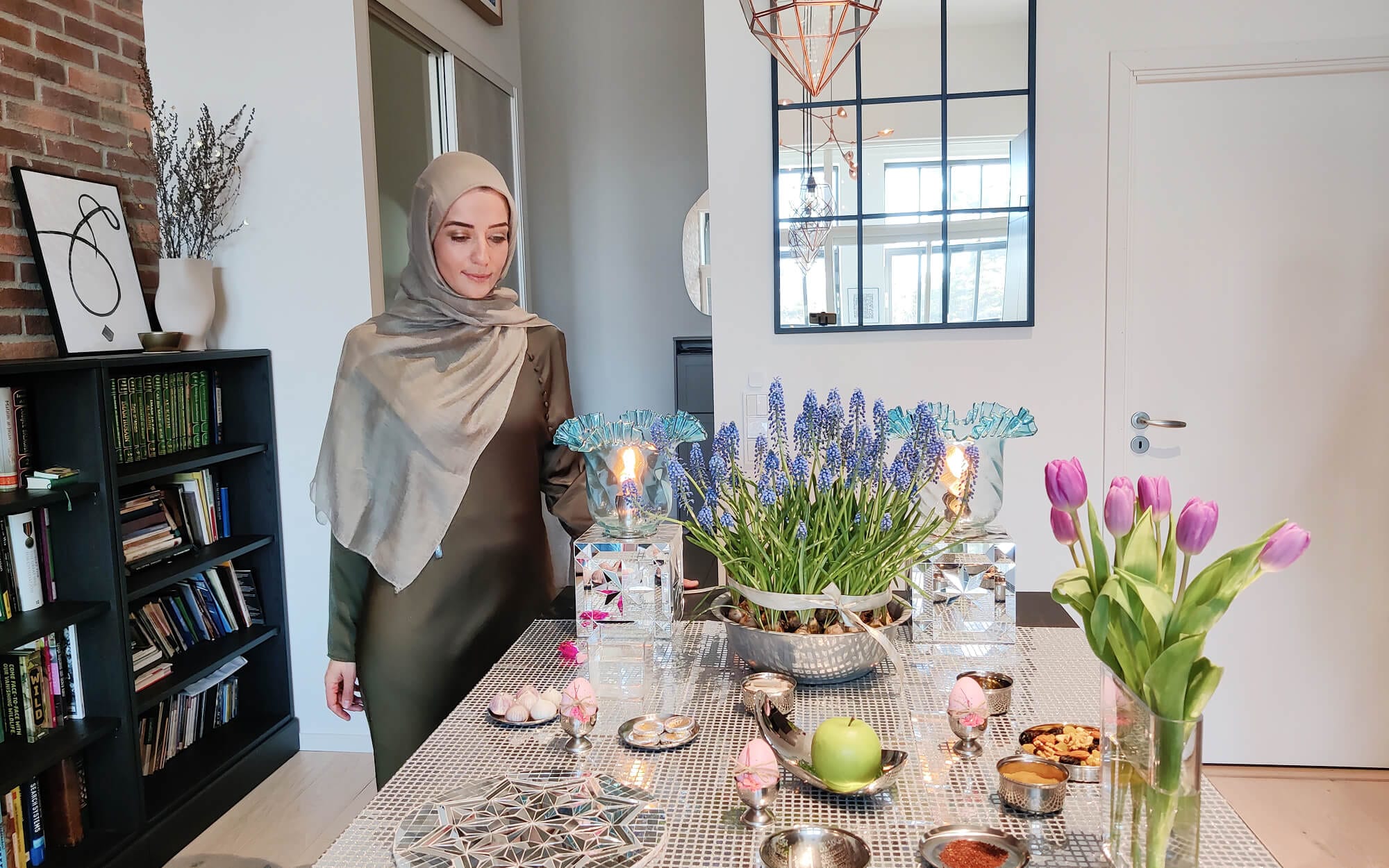
Why Nowruz matters today
In a world that often moves too fast, Nowruz invites us to pause, reconnect with nature, and focus on what truly matters: health, love, resilience, and community. Whether or not you have Persian roots, the message of Nowruz – renewal, hope, and new beginnings – is universal.
As I sit by my Haftseen table today, I feel gratitude for traditions that help us mark the changing of seasons, both in the world and within ourselves.
Wishing you all a joyful Nowruz and a fresh, healthy start to the year!




